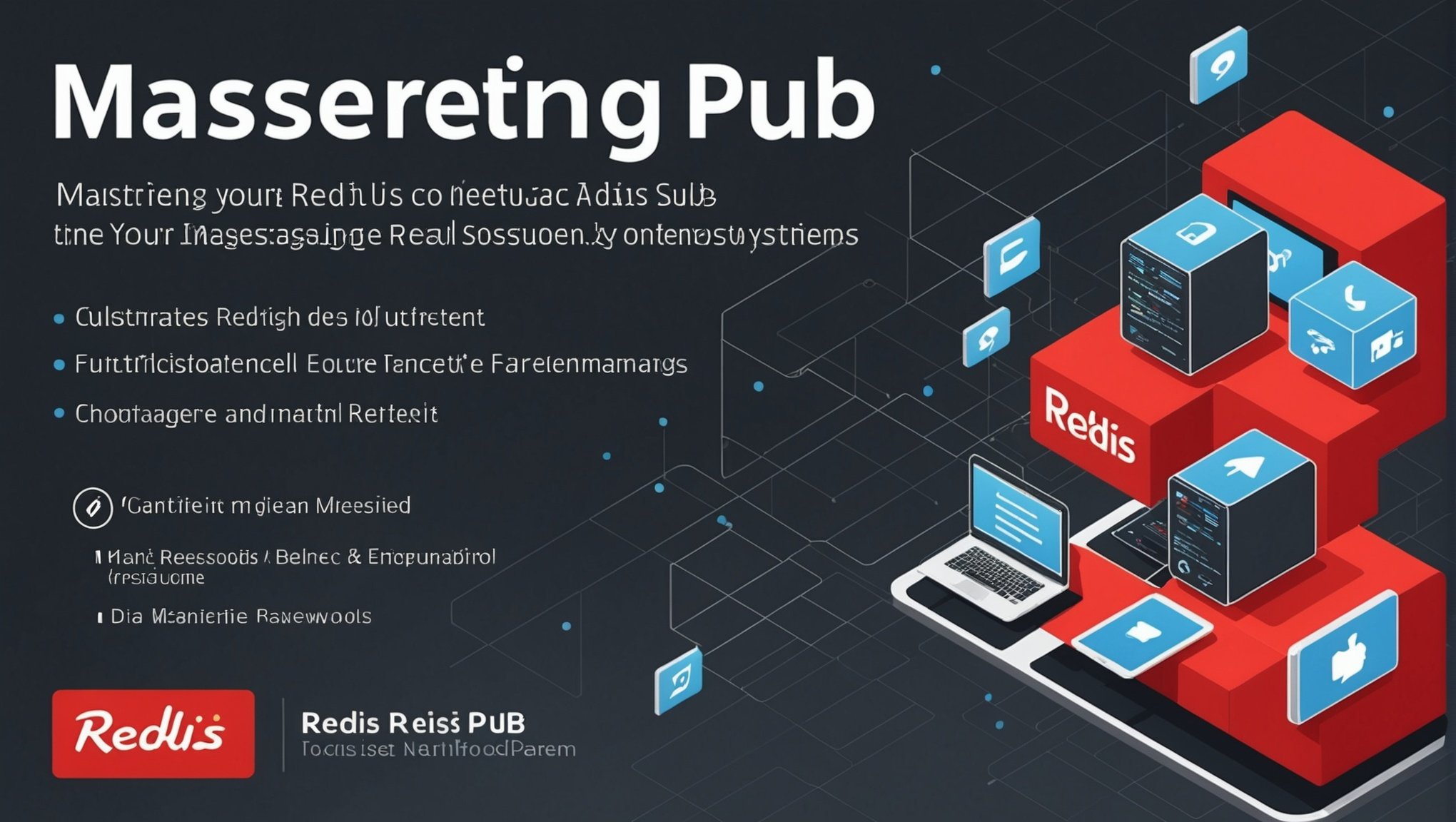Redis Pub/Sub offers a powerful framework for real-time messaging systems, driving efficiency and responsiveness in applications. Master this robust tool to unlock seamless communication channels for your users. Explore key concepts and best practices designed for both seasoned developers and newcomers. This guide equips you with the essential skills to not only implement but also manage effective messaging solutions, enabling your applications to thrive in a fast-paced digital landscape. Get ready to transform your understanding of Redis and elevate your projects to new heights.
Understanding Redis Pub/Sub
Redis Pub/Sub is a powerful real-time messaging system that facilitates efficient communication between applications. At its core, the Redis Pub/Sub architecture consists of publishers, subscribers, and channels. Publishers send messages to specific channels, while subscribers listen to these channels to receive messages. This decoupling allows for seamless interaction without the need for direct connections between the sender and receiver.
Additional reading : Navigating startup success with a digital product design studio
One of the key features of Redis Pub/Sub is its ability to handle high-throughput messaging, making it ideal for applications requiring instant updates, such as chat applications or live data feeds. The system supports multiple subscribers per channel, ensuring messages are delivered to all interested parties simultaneously.
Compared to other messaging patterns, Redis Pub/Sub offers simplicity and speed. While traditional message queues like RabbitMQ or Kafka provide more complex features like message persistence and acknowledgment, Redis Pub/Sub excels in scenarios where real-time messaging is paramount and persistence is not a primary concern. The lightweight nature of Redis Pub/Sub makes it a preferred choice for applications prioritizing low latency and high-speed communication.
In parallel : Mastering AWS SageMaker: A Step-by-Step Guide to Deploying Your Machine Learning Model
In summary, Redis Pub/Sub is a robust solution for developers seeking efficient and straightforward real-time messaging capabilities.
Setting Up Redis Pub/Sub
To harness the power of Redis Pub/Sub, begin with a straightforward Redis installation. First, download the latest Redis version from its official website. For UNIX-based systems, extract the tarball and compile it using make. Windows users can find pre-compiled binaries. Once installed, start the Redis server with the command redis-server.
Configuring Redis for Pub/Sub
Optimising Redis for Pub/Sub performance involves tweaking configuration settings. Open the redis.conf file and adjust the maxclients parameter to handle more connections, ensuring smooth message flow. Additionally, set timeout to zero to prevent client disconnection during long idle periods. These steps enhance Redis's ability to manage high-throughput messaging.
Publishing and Subscribing: Code Snippets
Implementing Pub/Sub in your application requires both publishing and subscribing functionalities. To publish a message, use the following command in your Redis client:
PUBLISH channel_name "Your message here"
For subscribing, execute:
SUBSCRIBE channel_name
These commands enable real-time communication between your application components. By following this setup guide, you can efficiently implement Redis Pub/Sub, ensuring robust and swift message delivery across your systems.
Implementing Advanced Pub/Sub Techniques
To enhance the functionality of Redis Pub/Sub, implementing Advanced Pub/Sub Techniques is essential. One effective method is utilizing patterns for message handling. By subscribing to patterns instead of specific channels, applications can filter and route messages dynamically. This flexibility allows subscribers to listen to multiple channels with similar naming conventions, streamlining the message flow.
Strategies for Managing Message Delivery Guarantees
Ensuring reliable message delivery is crucial in many applications. While Redis Pub/Sub does not inherently support message persistence, developers can implement strategies to manage message handling guarantees. One approach is to combine Redis Pub/Sub with other Redis data structures, such as lists or streams, to store messages temporarily. This ensures messages are not lost if a subscriber fails to receive them.
Implementing Message Acknowledgments and Retries
To further enhance reliability, implementing message acknowledgments and retries is beneficial. Although Redis Pub/Sub lacks built-in acknowledgment mechanisms, developers can create custom solutions. For instance, using a secondary data store to track message delivery status can facilitate retries. By acknowledging received messages and resending unacknowledged ones, systems can achieve higher reliability and robustness in message handling.
Performance Optimization for Redis Pub/Sub
Optimizing the performance of Redis Pub/Sub is crucial for ensuring efficient message delivery. Performance Tuning involves several techniques to measure and monitor how well your system is running. Start by using Redis's built-in monitoring tools, such as INFO and MONITOR, to track real-time metrics like memory usage and command statistics. These insights help identify bottlenecks and areas for improvement.
Best Practices for Optimizing Message Throughput and Latency
To enhance message throughput and reduce latency, consider the following best practices:
- Increase
maxclients: Adjust this parameter in theredis.conffile to allow more simultaneous connections, boosting message flow. - Use pipelining: This technique reduces the round-trip time by sending multiple commands in a single request, improving overall efficiency.
- Optimize network settings: Ensure low-latency network configurations to minimize delays in message delivery.
Scaling Redis Pub/Sub for High-Load Scenarios
Scaling Redis Pub/Sub to handle high-load scenarios requires Redis Optimization strategies. Horizontal scaling, through Redis Cluster or Redis Sentinel, distributes the load across multiple instances, ensuring balanced resource usage. Additionally, consider partitioning channels to distribute subscriber loads evenly. By employing these methods, Redis Pub/Sub can maintain high performance even under demanding conditions.
Troubleshooting Common Issues
When working with Redis Pub/Sub, encountering common problems is inevitable. Understanding how to troubleshoot these issues effectively is crucial for maintaining seamless operations.
Identifying and Resolving Connectivity Issues
Connectivity problems often arise due to network misconfigurations or server overloads. To troubleshoot, first verify network settings and ensure that the Redis server is accessible. Use tools like ping and telnet to test server reachability. If connectivity persists, examine the redis.conf file for misconfigured parameters such as bind and port.
Debugging Message Loss and Delivery Failures
Message loss can occur if subscribers disconnect unexpectedly. To address this, implement message persistence strategies using Redis data structures like lists or streams to temporarily store messages. This ensures that messages are retried if initially undelivered. Additionally, monitor the pubsub command statistics to check for anomalies in message flow.
Tools and Techniques for Effective Monitoring and Troubleshooting
Utilize Redis's built-in commands such as MONITOR and INFO to gather real-time insights into server performance. These tools help identify bottlenecks and potential issues. For advanced troubleshooting, consider integrating third-party monitoring solutions like Prometheus or Grafana to visualize metrics and set up alerts for critical events.
Real-World Use Cases and Examples
In the realm of Redis Use Cases, Messaging Applications stand out as a prominent area where Redis Pub/Sub shines. One notable example is its implementation in chat applications, where real-time messaging is crucial. Companies like Slack and WhatsApp leverage Redis Pub/Sub to ensure messages are delivered instantly, maintaining seamless communication among users.
Case Studies of Successful Implementations
A compelling case study involves a financial services company that adopted Redis Pub/Sub to handle stock market data feeds. By using Redis, they achieved low-latency updates, crucial for traders who rely on real-time information to make informed decisions. This implementation highlights Redis's capability to support high-throughput environments.
Industry-Specific Applications and Benefits
In the gaming industry, Redis Pub/Sub is employed to manage multiplayer game states and leaderboards. This ensures players receive immediate updates, enhancing the gaming experience. Similarly, in the media sector, live streaming platforms use Redis to synchronize comments and reactions, fostering interactive viewer engagement.
Future Trends and Potential Developments
Looking ahead, the evolution of real-time messaging systems promises further enhancements. With advancements in machine learning and AI, Redis Pub/Sub could integrate predictive analytics, offering smarter message routing and processing. These developments will continue to solidify Redis's position in diverse industry applications.










